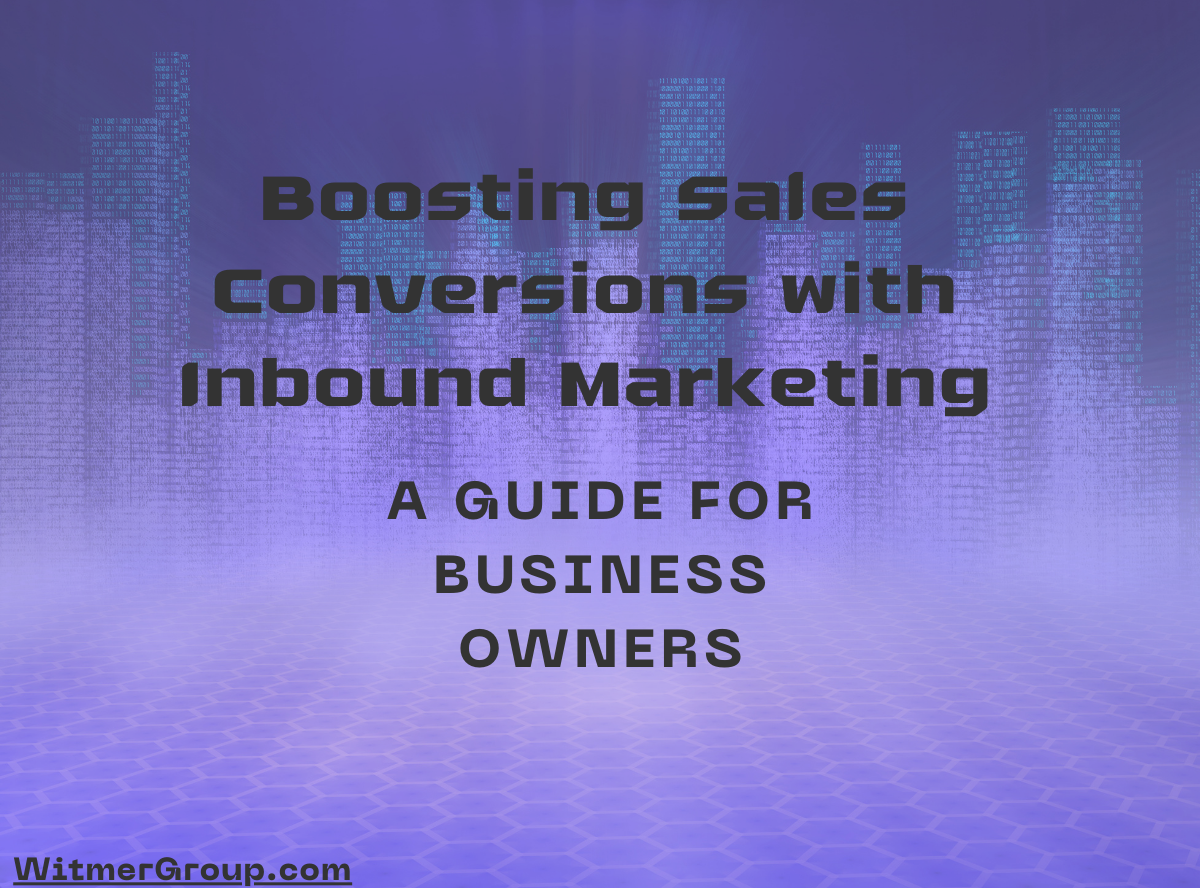Boosting Sales Conversions with Inbound Marketing: A Guide for Business Owners

Learn how inbound marketing can transform your lead generation efforts into actual sales, guiding prospects through the buyer's journey with targeted content and nurturing strategies.
Do you pour time and money into lead generation efforts only to have those promising prospects fail to convert into sales? If so, you're not alone. Many businesses never fully capitalize on initial engagement and miss out on potential revenue.
Inbound marketing is a proven strategy that turns more leads into sales by guiding them through the buyer's journey. Read on to learn how inbound marketing eliminates sales roadblocks and helps you transform more leads into customers.
What is Inbound Marketing?
Inbound marketing refers to various marketing tactics and channels (e.g., blog posts or emails) that draw potential customers to your business by providing value at each stage of their buyer's journey.
Unlike outbound marketing, which interrupts consumers through cold calls or disruptive ads, inbound attracts them organically by addressing their pain points with relevant content.
For many modern businesses, poor lead conversion rate is a common frustration. Prospects may download an ebook or schedule a demo but fail to become paying customers.
This is where inbound marketing comes in by aligning your strategies with the buyer's journey, you can nurture leads with the right information at the right time to boost conversions.
Understanding the Buyer's Journey
To convert leads more effectively, you must first map out the typical buyer's journey your prospects go through. There are three key stages most consumers pass through before making a purchase:
- Awareness Stage—The prospect realizes they have a problem or need and begins researching solutions.
- Consideration Stage—The prospect evaluates and compares different options based on the content they consume.
- Decision Stage—The prospect determines the best solution for their needs and makes the final purchase decision.
Your inbound marketing efforts should provide tailored content to lead prospects through each stage. Valuable information catered to where they are in the buying process can enhance their experience, build trust, and ultimately turn a lead into a sale.
Crafting Compelling Content for Awareness
When prospects initially research problems and solutions, insightful content can grab their attention and drive them closer to your brand. Create blog posts, videos, and visual content that speaks directly to the target audience's pain points or needs.
Focus on keywords and phrases they are likely searching for. Weave in compelling storytelling that resonates emotionally with the viewer. Address their questions and concerns with actionable tips and recommendations.
This stage is all about positioning your brand as a trusted resource.
Nurturing Prospects in the Consideration Stage
For prospects comparing options, you must provide informative content highlighting why your solution is the right choice. Email sequences that send helpful guides, product comparisons, demonstration videos, and webinars allow you to showcase your offerings while educating leads.
Personalize these materials based on the prospect's role, company size, and specific needs. The goal here is to be helpful—not make a sale. You want leads feel confident choosing your brand when the decision time comes.
Converting Leads into Customers
Now that leads understand their problem and see your solution as the best option, they are ready to convert into paying customers. Strategically communicate how your product or service solves their exact issues using customer testimonials and persuasive messaging on landing pages.
Clear CTAs remind the prospect it is time to take the next step, whether to schedule a demo, start a free trial, or purchase. An optimized website and seamless checkout process are also vital in ensuring conversions.
Leveraging Marketing Automation
Running an effective inbound strategy requires properly nurturing and tracking each lead. This is where marketing automation platforms are invaluable.
These tools allow you to identify prospects based on their digital behaviors, automatically trigger personalized follow-ups, and monitor engagement rates.
Marketing automation provides consistency and enhances the human touch while giving your sales teams more time to establish meaningful connections.
Overcoming Challenges and Pitfalls
Of course, executing a seamless inbound strategy is easier said than done. Consistency with content publishing and social media engagement is vital. Aligning your blog and visual assets with target buyer personas ensures content resonates.
Be careful not to miss key stages of the buyer's journey when mapping out content. Insufficient follow-up and lack of personalization are common pitfalls on the sales side. Providing the appropriate information and human touch at each turn is the key to guiding leads to conversion.
Aligning Sales and Marketing Efforts
Sales and marketing teams must work collaboratively when implementing an inbound strategy. Marketing generates and nurtures leads, then passes off sales-ready prospects. Sales need insight into content performance and lead scoring to optimize their outreach. Shared goals, regular communication, and integrated CRM systems allow for smooth hand-offs and a consistent buyer experience.
Improve Your Lead Generation with Inbound Marketing
Inbound marketing enables you to attract qualified prospects and provide tailored interactions that evolve into sales. Each piece of content should move leads closer to becoming customers.
From awareness to consideration to decision, maintain relevant messaging and automation that builds trust and positions your business as the premier solution. With these inbound strategies and alignment between marketing and sales, your business will be better able to convert leads and grow revenue.
Inbound marketing services from Witmer Group will help you implement a results-driven inbound strategy tailored to your business goals. Contact us today to learn more.

